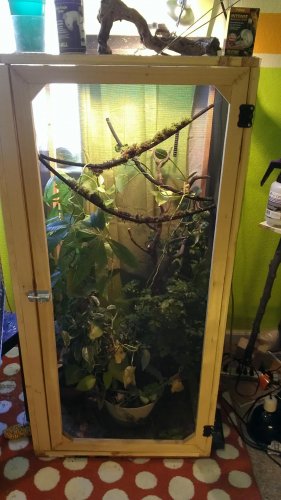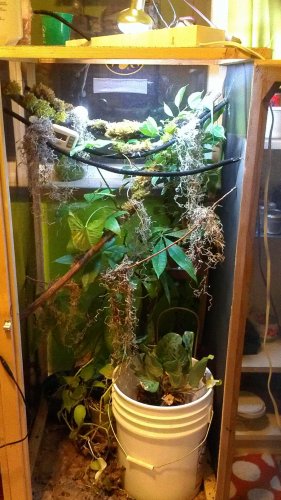reptileguy112
Member
I found tons of moss on trees while I was in tahoe and decided to take home a branch with some for my enclosure.I think it is fruticose lichen.Whatever grows on the trees in tahoe is what it is.It looks like the more mature moss growths have black spots on the tips.You decide by what you know about lichens to figure out what type it is. Is it okay for the chameleon to eat if she takes a nibble?It looks great in my cage and I hope it doesn't go into shock and die from the huge temp and humidity change.











